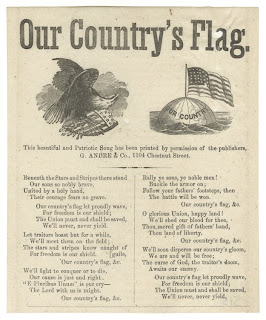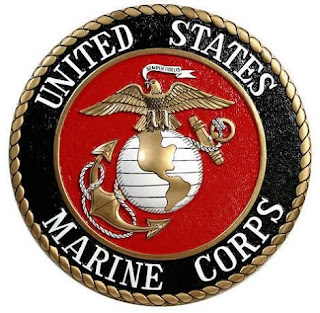ALL GAVE SOME...SOME GAVE ALL -
MARINES, ARMY, AIR FORCE, NAVY, COAST GUARD OFG TEAM.


This posting is dedicated for all U.S. Veteran's who have served, military men and women who are currently serving, and who have died by sacrificing all to protect and serve the United States of America.


Veterans Day
By Taylor Weinman
Representing the red white and blue
The colors of our flag stand out proud and true.
The white stars on blue background with red and white stripes
Remind me of these veterans, who all risked their lives.
Just so the people of the U.S. could all live in peace and be free
These are the heroes that represent you and me.
They stood up strongly, untied as one,
And kept up the fighting until they were done.
And although some have fallen, and lost their lives in war,
We pray for each one of them.
And now that their souls live on forever more,
Above in God's hands.
They watch over our nation,
And give us strength to triumph over others with strong anticipation.
So every year, when this day comes by,
Think of all the veterans that while fighting, had to die.
And remember that they were people
With fire and passion embedded inside.
They die for this country,
So remember and honor them with pride
History of Veteran's Day
World War I – known at the time as “The Great War” - officially ended when the Treaty of Versailles was signed on June 28, 1919, in the Palace of Versailles outside the town of Versailles, France. However, fighting ceased seven months earlier when an armistice, or temporary cessation of hostilities, between the Allied nations and Germany went into effect on the eleventh hour of the eleventh day of the eleventh month. For that reason, November 11, 1918, is generally regarded as the end of “the war to end all wars.”
 Soldiers of the 353rd Infantry near a church at Stenay, Meuse in France, wait for the end of hostilities. This photo was taken at 10:58 a.m., on November 11, 1918, two minutes before the armistice ending World War I went into effect
Soldiers of the 353rd Infantry near a church at Stenay, Meuse in France, wait for the end of hostilities. This photo was taken at 10:58 a.m., on November 11, 1918, two minutes before the armistice ending World War I went into effect
In November 1919, President Wilson proclaimed November 11 as the first commemoration of Armistice Day with the following words: "To us in America, the reflections of Armistice Day will be filled with solemn pride in the heroism of those who died in the country’s service and with gratitude for the victory, both because of the thing from which it has freed us and because of the opportunity it has given America to show her sympathy with peace and justice in the councils of the nations…"
The original concept for the celebration was for a day observed with parades and public meetings and a brief suspension of business beginning at 11:00 a.m.
The United States Congress officially recognized the end of World War I when it passed a concurrent resolution on June 4, 1926, with these words:
Wheras the 11th of November 1918, marked the cessation of the most destructive, sanguinary, and far reaching war in human annals and the resumption by the people of the United States of peaceful relations with other nations, which we hope may never again be severed, and
Whearas it is fitting that the recurring anniversary of this date should be commemorated with thanksgiving and prayer and exercises designed to perpetuate peace through good will and mutual understanding between nations; and
Wheras the legislatures of twenty-seven of our States have already declared November 11 to be a legal holiday: Therefore be it Resolved by the Senate (the House of Representatives concurring), that the President of the United States is requested to issue a proclamation calling upon the officials to display the flag of the United States on all Government buildings on November 11 and inviting the people of the United States to observe the day in schools and churches, or other suitable places, with appropriate ceremonies of friendly relations with all other peoples.
An Act (52 Stat. 351; 5 U. S. Code, Sec. 87a) approved May 13, 1938, made the 11th of November in each year a legal holiday—a day to be dedicated to the cause of world peace and to be thereafter celebrated and known as "Armistice Day." Armistice Day was primarily a day set aside to honor veterans of World War I, but in 1954, after World War II had required the greatest mobilization of soldiers, sailors, Marines and airmen in the Nation’s history; after American forces had fought aggression in Korea, the 83rd Congress, at the urging of the veterans service organizations, amended the Act of 1938 by striking out the word "Armistice" and inserting in its place the word "Veterans." With the approval of this legislation (Public Law 380) on June 1, 1954, November 11th became a day to honor American veterans of all wars.
Later that same year, on October 8th, President Dwight D. Eisenhower issued the first "Veterans Day Proclamation" which stated: "In order to insure proper and widespread observance of this anniversary, all veterans, all veterans' organizations, and the entire citizenry will wish to join hands in the common purpose. Toward this end, I am designating the Administrator of Veterans' Affairs as Chairman of a Veterans Day National Committee, which shall include such other persons as the Chairman may select, and which will coordinate at the national level necessary planning for the observance. I am also requesting the heads of all departments and agencies of the Executive branch of the Government to assist the National Committee in every way possible."

President Eisenhower signing HR7786, changing Armistice Day to Veterans Day. From left: Alvin J. King, Wayne Richards, Arthur J. Connell, John T. Nation, Edward Rees, Richard L. Trombla, Howard W. Watts
On that same day, President Eisenhower sent a letter to the Honorable Harvey V. Higley, Administrator of Veterans' Affairs (VA), designating him as Chairman of the Veterans Day National Committee.
In 1958, the White House advised VA's General Counsel that the 1954 designation of the VA Administrator as Chairman of the Veterans Day National Committee applied to all subsequent VA Administrators. Since March 1989 when VA was elevated to a cabinet level department, the Secretary of Veterans Affairs has served as the committee's chairman.
The Uniform Holiday Bill (Public Law 90-363 (82 Stat. 250)) was signed on June 28, 1968, and was intended to ensure three-day weekends for Federal employees by celebrating four national holidays on Mondays: Washington's Birthday, Memorial Day, Veterans Day, and Columbus Day. It was thought that these extended weekends would encourage travel, recreational and cultural activities and stimulate greater industrial and commercial production. Many states did not agree with this decision and continued to celebrate the holidays on their original dates.
The first Veterans Day under the new law was observed with much confusion on October 25, 1971. It was quite apparent that the commemoration of this day was a matter of historic and patriotic significance to a great number of our citizens, and so on September 20th, 1975, President Gerald R. Ford signed Public Law 94-97 (89 Stat. 479), which returned the annual observance of Veterans Day to its original date of November 11, beginning in 1978. This action supported the desires of the overwhelming majority of state legislatures, all major veterans service organizations and the American people.
Veterans Day continues to be observed on November 11, regardless of what day of the week on which it falls. The restoration of the observance of Veterans Day to November 11 not only preserves the historical significance of the date, but helps focus attention on the important purpose of Veterans Day: A celebration to honor America's veterans for their patriotism, love of country, and willingness to serve and sacrifice for the common good.
Here is the official site of United States Department of Veteran's Affairs for observing Veteran's Day, November 11, 2010:
http://www1.va.gov/opa/vetsday/
The Veterans Day National Ceremony is held each year on November 11th at Arlington National Cemetery . The ceremony commences precisely at 11:00 a.m. with a wreath laying at the Tomb of the Unknowns and continues inside the Memorial Amphitheater with a parade of colors by veterans’ organizations and remarks from dignitaries. The ceremony is intended to honor and thank all who served in the United States Armed Forces.
The Veterans Day National Committee also selects a number of regional sites for Veterans Day observances throughout the country. From stirring parades and ceremonies to military exhibits and tributes to distinguished veterans, these events serve as models for other communities to follow in planning their own observances.
While I was working on this special posting I found a site of some great poems dedicated for Veteran's Day and our current serving military men & women. I'm going to select my favorites of this site on here. There is one near the beginning of this posting and below.
 This picture is one of my favorites. This one is for all of the Native American Veteran's out there. I dedicate this one for the code talkers in World War 2 and present service men & women! I have a special love for the Native American culture. Thanks for serving and I'm forever in your debt! You are truly heroes to me!
This picture is one of my favorites. This one is for all of the Native American Veteran's out there. I dedicate this one for the code talkers in World War 2 and present service men & women! I have a special love for the Native American culture. Thanks for serving and I'm forever in your debt! You are truly heroes to me!
Heroes Die for Me
by Jamie Burns
I am the flag
I look down upon this land called America .
I have been here since this great nation was formed,
I have seen each battle fought
I have seen the heroes die for me, for my country
Thank you all those of you
Who have kept me flying in the breeze
Keeping this country united as one.
Thank you those of you who have sacrificed your lives,
Giving up all that I may still fly,
Watching over the citizens of this nation.
Thank you all those of you who have ever fought,
I am ever grateful for you.
You risked everything; you faced death each day,
Faced fear, faced many terrible things.
And because of you, my thank you's ring out,
Filling the sky, echoing from the hills
They find their way to the graveyards,
And to all of you still living,
You are a special kind of person.
To anyone who has ever served this country,
And to those serving today
Thank you.
As I watch life from atop my flagpole,
As I think of all you've done,
My feelings become too powerful for words
And all I can say is thank you.
Here is the site: http://www.fifeschools.com/cjh/news/newsitems/VeteransDayPoems.htm

GOD BLESS UNITED STATES OF AMERICA!












































